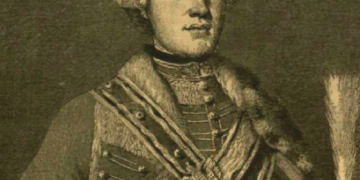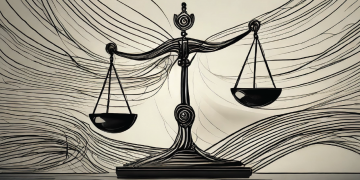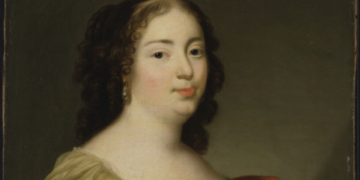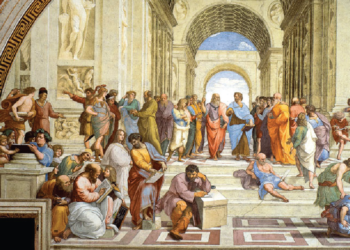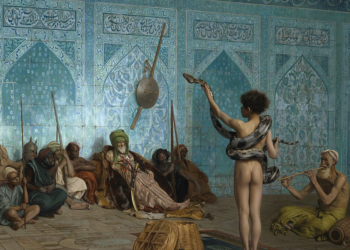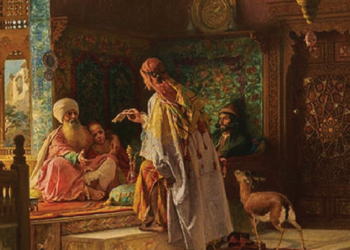Azraqi Heravi
1) His Biography
Azraqi Heravi was a prominent Persian poet of the 11th century, best known for his refined mastery of the qasida form and his association with the cultural and intellectual court of the Ghaznavids. He was born in Herat, a historically rich city in the region of Khorasan, which was then under the rule of the Ghaznavid Empire. While the exact date of his birth remains uncertain, his literary activity is generally placed in the latter part of the 11th century. Herat, with its vibrant scholarly and artistic circles, offered a fertile environment for literary talent, and Azraqi was deeply influenced by the intellectual currents of his time.
Little is known about Azraqi’s early life, but historical accounts suggest that he received a comprehensive education typical of the elite Persian literati, including instruction in Arabic, theology, grammar, and the poetic arts. This grounding allowed him to engage with both Persian and Arabic literary traditions, which is evident in the richness of his language and the intertextual depth of his poetry. It is likely that he was exposed to the works of earlier masters such as Rudaki and Unsuri, and he soon carved out a space for himself in the competitive world of court poetry.
Azraqi’s talent earned him a position at the Ghaznavid court, most probably under the rule of Sultan Ibrahim or his successors. The Ghaznavid court, headquartered in Ghazni, was a hub for Persian literary activity, attracting poets, historians, and philosophers from across the region. Azraqi flourished in this environment, composing elaborate qasidas to honour his patrons and secure royal favour. His poetry, steeped in formal elegance and rhetorical flair, became well-regarded among his peers and was cited by later Persian critics as exemplary in style and technique.
His panegyrics often followed the conventions of the genre—lavish praise, detailed descriptions of the virtues of kings and nobles, and intricate metaphors—but he was also known for his technical innovations. He experimented with structure and diction, helping to refine the aesthetic standards of Persian court poetry. Azraqi’s compositions were admired not just for their content but for their sophisticated craftsmanship, including his deft use of metre and rhyme.
Though courtly praise poetry was his primary occupation, Azraqi also composed verses of a more personal or philosophical nature, though fewer of these have survived. Some fragments suggest that he was attuned to the spiritual and ethical dimensions of human life, drawing upon themes of divine justice and the fleeting nature of worldly glory. Such lines indicate a deeper reflective streak within a poet who otherwise operated in a highly formal and performative literary space.
Azraqi’s reputation continued to grow during his lifetime, and he was later cited by biographers and anthologists as one of the leading poets of his age. Notably, his name appears in several important Persian tazkirahs (biographical anthologies of poets), where he is praised for both his poetic brilliance and his contributions to the evolving courtly literary tradition. These references are among the few surviving historical records that help reconstruct his life and standing in the literary world of his era.
The exact date of Azraqi Heravi’s death is also uncertain, though it is generally believed he died in the early 12th century. While many of his poems have been lost to time, the surviving corpus is sufficient to attest to his skill and influence. His work offers a vivid portrait of courtly life and literary values in 11th-century Persia and represents a significant chapter in the development of Persian poetic expression. Through his elegant verse and command of form, Azraqi helped define the standards of classical Persian poetry for future generations.
2) Main Works
Divan-e Azraqi (Collected Poems)
The Divan is the principal surviving body of Azraqi’s work, consisting mainly of qasidas (odes), alongside some fragments of shorter lyrical forms. This collection includes panegyrics in praise of the Ghaznavid rulers and various nobles, filled with courtly language, metaphor, and grand imagery. The Divan demonstrates his technical mastery of classical Persian metres and rhetorical flourish, capturing the political and cultural ambience of the time.
Qasidas in Praise of the Ghaznavid Court
Azraqi is best known for his elaborate qasidas dedicated to rulers such as Sultan Ibrahim of Ghazna and other high-ranking officials. These odes typically extol their military triumphs, virtues, and generosity. They are characterised by ornate language, mythological allusions, and vivid descriptions of grandeur. These poems served both as artistic expressions and instruments of courtly diplomacy, securing patronage and honour.
“Sanā-ye Khāqān” (Panegyric to the King)
This well-known qasida, whose title translates to “Praise of the Sovereign,” exemplifies Azraqi’s skill in court poetry. The poem is a celebration of royal power, depicting the ruler as both a just leader and a divine agent. It contains rich metaphors comparing the king to celestial bodies and references to historical and mythical precedents to amplify the monarch’s glory.
Poems on Natural Imagery and the Seasons
Among the fragments attributed to Azraqi are verses that describe the beauty of spring, gardens in bloom, and the shifting moods of nature. Though composed within the formal structure of qasidas or shorter forms, these poems reveal a keen eye for detail and a lyrical sensibility. They offer a contrast to his more rhetorical panegyrics, demonstrating his range as a poet.
Philosophical and Reflective Fragments
A number of verses attributed to Azraqi deal with themes such as the transience of life, the role of fate, and divine justice. These reflective pieces, although not the focus of his career, suggest a poet capable of philosophical introspection. Their tone is often solemn, with a hint of Sufi influence, and they serve as a counterpoint to his otherwise celebratory court verse.
Lost Work: “Ajāyeb al-Makhluqāt” (Wonders of Creation)
Medieval sources suggest that Azraqi may have attempted a Persian adaptation or poetic rendition of a cosmographic or encyclopaedic work, possibly titled Ajāyeb al-Makhluqāt. Although no copies of this text have survived, references indicate that it might have explored marvels of the natural world and divine creation, reflecting a blend of poetic imagination and scholarly curiosity.
Elegies and Mourning Verses (Marsiyas)
Some scattered verses of Azraqi are mournful in tone, dedicated to the loss of patrons or describing the general sorrow of death and impermanence. These elegies exhibit his ability to convey emotion with dignity and rhetorical grace, using classical motifs of grief such as withered roses, setting suns, and broken wine goblets.
Praise of Learning and Knowledge
In select poems, Azraqi praises scholars, poets, and the virtues of wisdom. These verses reflect his own learned background and engagement with the intellectual culture of Herat and Ghazni. They often include references to literature, science, and religion, affirming the court poet’s role not only as an artist but as a bearer of cultural knowledge.
3) Main Themes
Royal Praise and Courtly Panegyric
The dominant theme in Azraqi’s poetry is praise of kings, nobles, and patrons, primarily in the form of qasidas. These poems extol the virtues, military conquests, justice, and generosity of rulers such as the Ghaznavid sultans. Azraqi employed highly stylised language, complex metaphors, and classical allusions to elevate his subjects, aligning them with legendary and even divine figures. This theme reflects not only the demands of court life but also Azraqi’s mastery of rhetorical flourish and poetic decorum.
Grandeur and Order of the Court
Closely linked to royal praise is Azraqi’s celebration of courtly splendour, ceremony, and hierarchy. His poetry often depicts the palace as a centre of cosmic order, where the ruler dispenses justice, and poets, scholars, and warriors find their place. These idealised portrayals of the court helped reinforce the legitimacy and magnificence of Ghaznavid rule while showcasing the poet’s role in shaping public perception through art.
Nature and the Cycle of Seasons
Azraqi frequently invoked natural imagery to enrich his poetic descriptions, using the beauty of spring, the freshness of gardens, and the symbolism of flowers, birds, and the changing seasons. Nature served as both a backdrop for courtly life and a source of metaphorical insight. Spring, in particular, was often used to represent renewal, divine grace, or the vitality of a just king’s reign. These images lent sensual colour and lyrical elegance to his formal compositions.
Transience and Mortality
Though most of Azraqi’s poetry is celebratory in tone, some verses reflect on the fleeting nature of life, power, and beauty. These meditative lines often appear at the conclusion of a panegyric or within elegies, where the poet turns from praise to philosophical reflection. Through metaphors such as the withered rose or the passing cloud, Azraqi acknowledged the impermanence of worldly glory, lending a moral and contemplative dimension to his verse.
Knowledge and Learning
Azraqi’s poetry shows an awareness of intellectual life, particularly in his admiration for scholars and learned patrons. He occasionally weaves references to classical literature, religious knowledge, and philosophical ideas into his poems, affirming the value of wisdom in both governance and poetry. This theme illustrates the poet’s own scholarly grounding and his participation in the broader intellectual milieu of Herat and Ghazni.
Mythological and Religious Allusion
To enhance the grandeur of his subjects, Azraqi frequently drew upon Islamic tradition, Persian mythology, and Arabic lore. His poems include references to Qur’anic figures, pre-Islamic heroes, and legendary kings such as Jamshid or Alexander. These allusions served to heighten the stature of those he praised and to align contemporary rulers with timeless archetypes of justice, wisdom, and power.
Loyalty and Service
As a court poet, Azraqi often highlighted themes of devotion, duty, and poetic service. He positioned himself as a loyal subject whose verse was an offering of both artistry and allegiance. This theme reinforced the reciprocal relationship between poet and patron, where the poet provides eternal fame through words, and the patron rewards loyalty with favour and security.
Mourning and Elegy
A smaller but significant portion of Azraqi’s work involves the theme of loss, particularly in mourning deceased patrons or reflecting on human frailty. These elegiac poems are marked by solemnity and restraint, often drawing on traditional imagery of decay and silence. They reveal a more personal and emotional register in his otherwise formal body of work, hinting at the deeper human concerns beneath the ornate surface of courtly verse.
4) Heravi as a Poet
Azraqi Heravi stands as a distinguished figure in the rich tradition of Persian court poetry, renowned for his polished style and masterful command of the qasida form. His work reflects the refined literary culture of the Ghaznavid period, characterised by intricate rhetoric, vivid imagery, and a deep engagement with the conventions of Persian panegyric poetry. Azraqi’s poetry exemplifies the fusion of classical Persian poetic norms with the unique cultural and political milieu of 11th-century Khorasan and Ghazni, making him both a product of his time and an innovator within it.
As a poet, Azraqi demonstrated exceptional skill in balancing formal requirements with expressive nuance. The qasida, his preferred vehicle, demanded strict adherence to metre, rhyme, and structure, while also offering ample room for artistic creativity. Azraqi exploited these formal constraints to produce works that were at once ornate and eloquent, filled with rhetorical devices such as metaphors, similes, and allusions. His ability to sustain extended praise without losing poetic vitality marked him as a master craftsman whose poems were both technically accomplished and emotionally resonant.
Beyond technical mastery, Azraqi’s poetry reveals a keen sensitivity to the social and political functions of verse in the courtly environment. His panegyrics did more than celebrate rulers—they constructed idealised images of kingship, justice, and cosmic order that reinforced the legitimacy and grandeur of the Ghaznavid dynasty. In this way, Azraqi’s poetry served as both art and political discourse, a tool for shaping public perception and securing patronage. His verses often portrayed the sultan as a divinely sanctioned figure whose power maintained harmony and prosperity, reflecting the intertwining of poetry and governance in medieval Persia.
Despite the formal nature of much of his output, Azraqi was not confined to mere flattery. His work sometimes hints at deeper reflections on the transience of power, the responsibilities of rulership, and the moral qualities essential to good governance. Such moments of introspection, though subtle, demonstrate his engagement with ethical and philosophical questions that transcended mere courtly praise. This dimension of his poetry adds layers of complexity, inviting readers to consider the human realities beneath the shining surface of royal grandeur.
Azraqi’s poetic voice is marked by a blend of grandeur and refinement. His language is elevated yet precise, capable of conjuring vivid images of battlefields, royal courts, and lush gardens. He drew on a wide range of literary and cultural references, incorporating elements from Persian mythology, Islamic tradition, and Arabic literature. This intertextual richness gave his poetry a cosmopolitan quality, appealing to the sophisticated tastes of the Ghaznavid elite and situating his work within a broader Persianate cultural framework.
As a representative of the Heravi literary school, Azraqi contributed to the flourishing of Persian poetry in eastern Iran and Afghanistan, regions that became crucial centres of Persian cultural production during the medieval period. His influence extended beyond his lifetime, as later poets looked to his refined style and thematic concerns as models to emulate. Through both his formal achievements and thematic innovations, Azraqi helped shape the trajectory of Persian court poetry in subsequent centuries.
5) His Legacy
Azraqi Heravi’s legacy in Persian literature is that of a consummate court poet who helped shape and elevate the art of panegyric poetry during the Ghaznavid era. His mastery of the qasida form and his ability to fuse ornate style with political and cultural themes established standards of poetic excellence that influenced generations of poets across the Persian-speaking world. His work is often cited in classical tazkirahs (biographical anthologies), where he is praised for his eloquence, craftsmanship, and contribution to the courtly poetic tradition.
One of Azraqi’s lasting impacts lies in his role in reinforcing the literary culture of the Ghaznavid court, which was a crucial hub for Persian poetry and scholarship in the 11th century. Through his elaborate praise of rulers and nobles, he helped articulate and propagate the ideals of kingship, justice, and divine favour that underpinned the political ideology of his time. This fusion of literary artistry and political purpose exemplifies how Persian poetry functioned not only as aesthetic expression but also as a tool of governance and social cohesion.
Azraqi’s refined use of classical rhetorical devices and his elegant diction influenced subsequent poets who sought to emulate the sophistication of his verse. His qasidas became exemplars of form and style, studied and admired by later Persian poets such as Anvari and Unsuri. In this way, he contributed to the codification of poetic norms that defined the golden age of Persian court poetry and shaped its evolution for centuries.
Beyond his immediate literary circle, Azraqi’s legacy extends to the broader Persianate cultural world, encompassing regions from Iran to Central Asia and South Asia, where Persian remained a language of high culture and administration for many centuries. His work reflects the cosmopolitanism and intellectual vitality of this cultural sphere, and his influence can be traced in the development of Persian literary traditions across diverse geographies.
While much of Azraqi’s poetry is centred on courtly themes, his occasional reflective and philosophical verses hint at a more personal poetic voice, adding depth to his legacy. This blend of public and private poetic sensibility enriched the Persian literary canon and inspired later poets to explore a wider emotional and intellectual range within classical forms.
Today, although not as widely known outside scholarly circles as some other Persian poets, Azraqi Heravi remains an important figure for understanding the development of Persian poetry in the medieval period. His surviving works offer valuable insights into the aesthetics, politics, and culture of the Ghaznavid court and serve as a testament to the enduring power of poetry to articulate both grandeur and subtle human experience.


